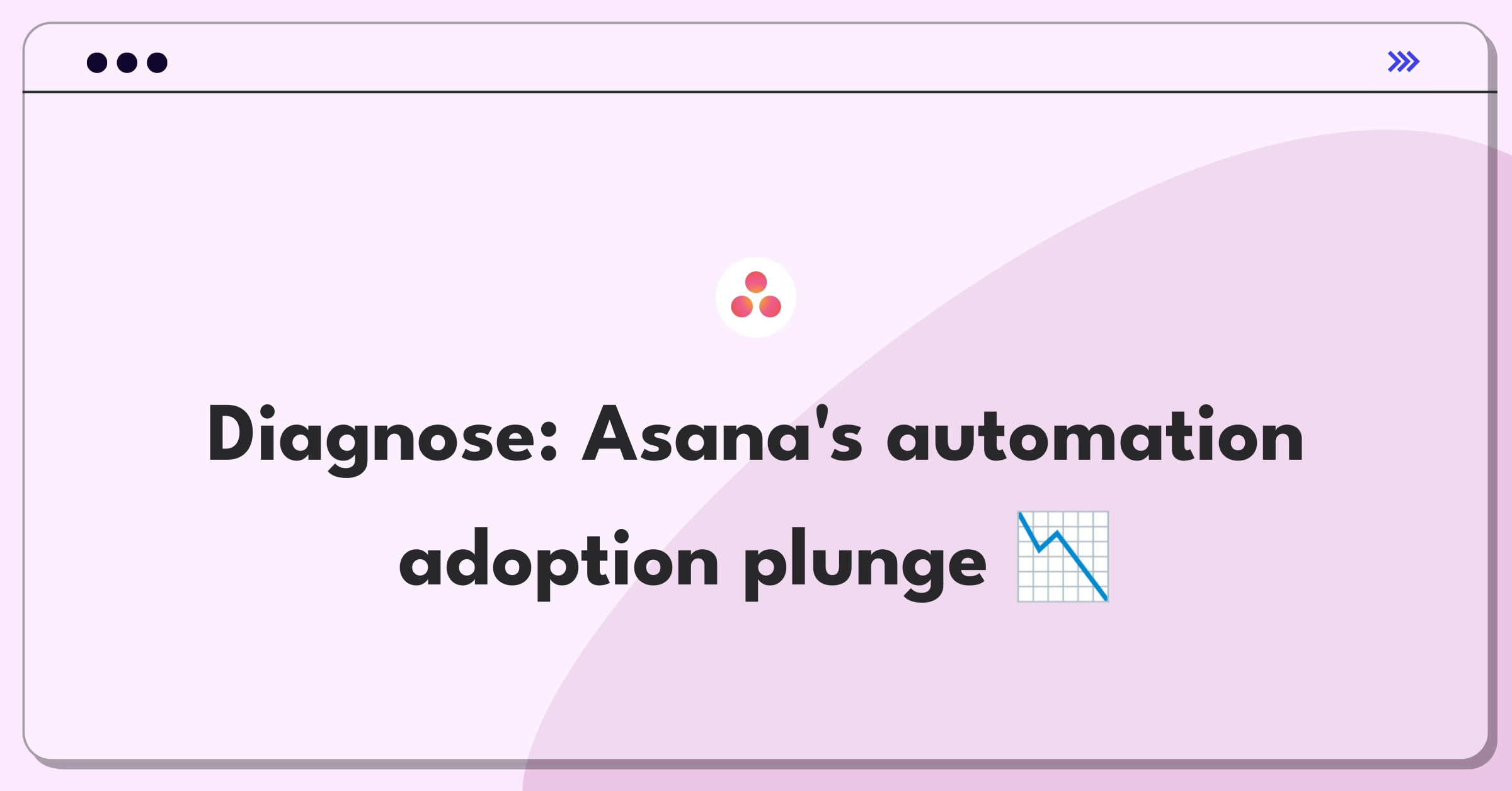Introduction
The recent 30% drop in adoption of Asana's new task automation feature is a concerning trend that requires immediate attention. To address this issue, I'll employ a systematic approach to identify, validate, and resolve the root cause while considering both short-term fixes and long-term strategic implications.
Framework overview
This analysis follows a structured approach covering issue identification, hypothesis generation, validation, and solution development.
Step 1
Clarifying Questions (3 minutes)
Why these questions matter: They help establish a baseline understanding of the situation and rule out simple explanations. For example, if the drop is concentrated in a specific user segment, it could point to a targeted issue rather than a general problem with the feature.
Hypothetical answer: Let's assume the adoption rate is measured by the percentage of active users who have used the feature at least once in the past week. The drop is seen across all user segments, but more pronounced in enterprise customers. There have been no recent changes to the feature's functionality or UI, and no significant changes in marketing or communication. We've received some negative feedback from enterprise users about the feature's complexity.
Impact on solution approach: This information suggests we should focus on the feature's usability, particularly for enterprise users, and investigate any recent changes that might have affected the overall user experience.
Subscribe to access the full answer
Monthly Plan
The perfect plan for PMs who are in the final leg of their interview preparation
$99 /month
- Access to 8,000+ PM Questions
- 10 AI resume reviews credits
- Access to company guides
- Basic email support
- Access to community Q&A
Yearly Plan
The ultimate plan for aspiring PMs, SPMs and those preparing for big-tech
$99 $33 /month
- Everything in monthly plan
- Priority queue for AI resume review
- Monthly/Weekly newsletters
- Access to premium features
- Priority response to requested question


.png)